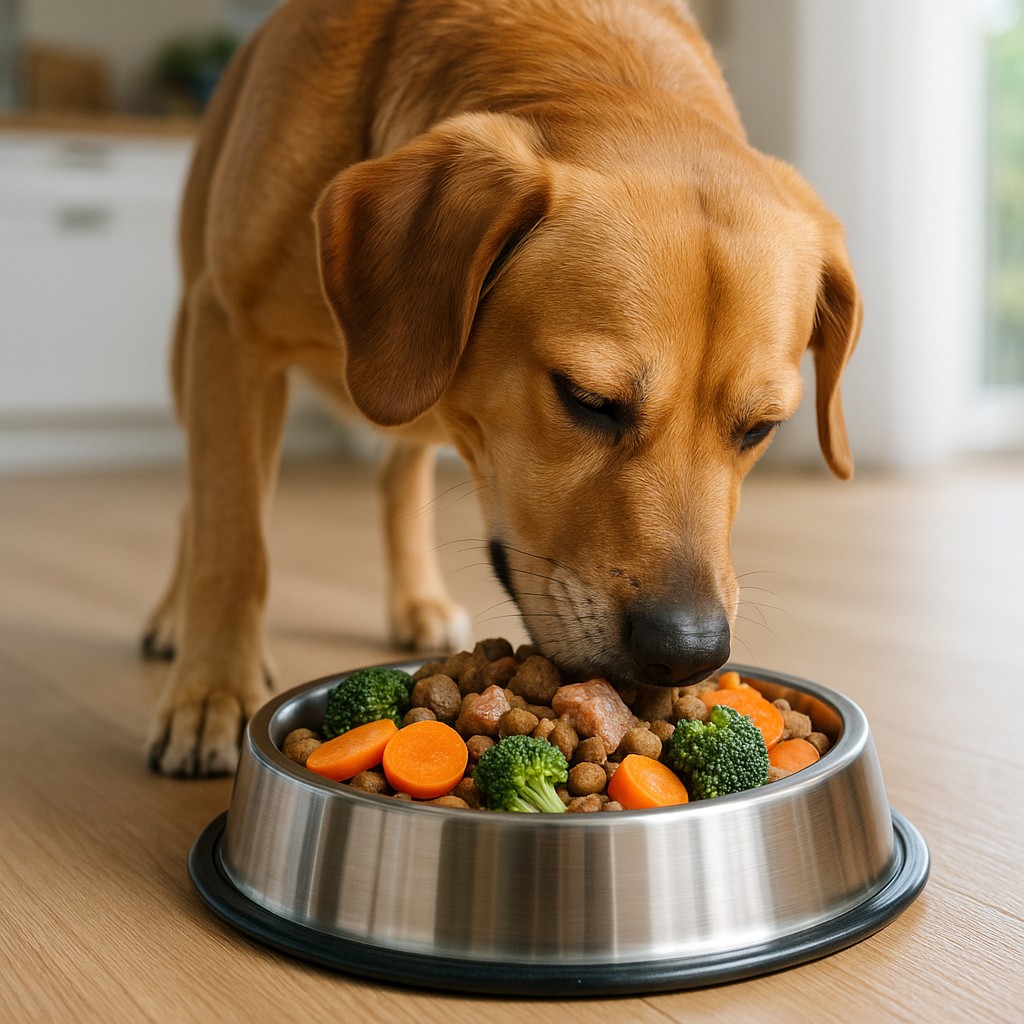Feeding your dog a healthy and tasty diet shows your love and care for their well-being. Like us, dogs need a balanced diet filled with nutrients to stay healthy, energetic, and happy. As pet owners, it’s essential to understand what our dogs need to live their best lives. With the right ingredients and meal planning, you can create a delicious diet that fits your dog’s needs.
Let’s learn how to create a tasty diet for your dog.
Understanding Nutritional Needs
Every dog is different, so their dietary needs change based on age, breed, and activity level. Puppies need more protein and fat for growth and energy, while older dogs may require diets that support joint health and digestion. It helps to talk to your veterinarian to learn about your dog’s specific needs.
Ensure their diet includes a balanced mix of protein, healthy fats, carbohydrates, vitamins, and minerals. Good protein sources include chicken, beef, fish, and legumes. Healthy fats like fish oil or flaxseed oil are essential for coat health and energy.
Carbohydrates from grains and vegetables provide energy, and fruits can be healthy snacks. Including these elements in your dog’s meals will help them thrive.
Choosing Quality Dog Food
Choosing high-quality dog food is one of the best ways to improve your dog’s diet. Premium brands use real, whole ingredients without fillers or artificial additives. One great option is Acana dog food. They focus on fresh and local ingredients to create balanced formulas for different life stages and dietary needs.
Acana dog food takes a natural approach to pet nutrition. They want to support your dog’s health with high-quality ingredients. Their food offers plenty of protein along with fruits and vegetables that help with digestion and immunity. By using local sources, Acana aims to provide the best nutrition for pets while making their meals enjoyable.
Homemade Dog Food Options
If you want to make homemade meals for your dog, there are many recipes to try. Cooking for your dog lets you choose what they eat based on their tastes and health needs. Start with lean meats like chicken or turkey.
Then add grains such as brown rice or quinoa, and include vegetables like carrots, peas, and spinach. Be sure to avoid harmful ingredients like onions, garlic, and certain spices for safety.
When making homemade dog food, it’s important to create balanced meals that provide all the necessary nutrients. Doing some research or talking to a vet can help you make meals with the right amounts of protein, carbohydrates, and fats. Taking the time to cook healthy meals can be gratifying, and your dog will likely enjoy the fresh food.
Snacks and Treats
Treats are important for training and rewarding your dog, but they should also be healthy. Homemade treats can be tasty. For instance, peanut butter and pumpkin biscuits are simple to make.
Store-bought treats can be good if you choose wisely. Look for treats with natural ingredients and avoid those with artificial flavours or preservatives. Dogs like variety, so changing treats can keep them interested and excited. Use treats for training and as a way to bond with your dog.
Hydration Matters
Don’t forget about hydration. Always provide fresh water for your dog. Consider adding a little low-sodium broth to their water to encourage them to drink more. Keeping your dog hydrated helps with digestion, skin health, and overall well-being.
Hydration needs can change depending on your dog’s size, activity level, and the weather. If your dog seems less interested in drinking or shows signs of dehydration, monitor their water intake and talk to a vet if necessary.
Meal Planning and Routine

Just like people, dogs do better with a routine at mealtime. Set a consistent feeding schedule to help regulate their digestive health and prevent overeating. Decide if you’ll feed your dog twice a day or follow a different plan based on their needs.
Include variety in their meals to keep your dog interested. Changing recipes and ingredients not only adds flavour but also offers a wider range of nutrients. This creativity ensures your dog enjoys their meals without getting bored.
Monitoring Your Dog’s Health
Keeping an eye on your dog’s health is essential to ensure that they are thriving on their diet. Regular check-ups with the veterinarian will allow you to monitor weight, skin condition, and overall health. Changes in appetite, energy levels, or bathroom habits can indicate that something in your dog’s diet or health needs to be addressed.
You can also observe your dog’s coat quality, digestion, and stool consistency. These attributes can reflect how well they are responding to their diet.
If you notice any unusual signs, such as excessive itching, lethargy, or digestive issues, speak with your vet to determine if dietary adjustments are necessary. This proactive approach helps ensure that your dog remains healthy throughout their life.





